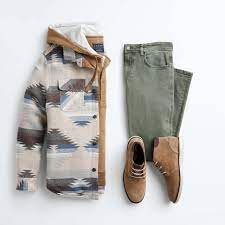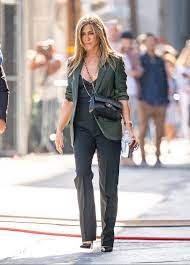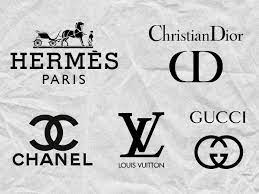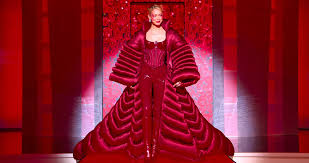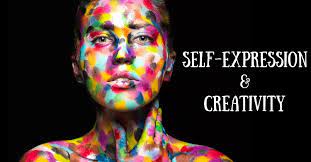Unleashing the Bohemian Spirit: Embracing the Unique Style of Bohemian Men
The Bohemian style has long been associated with free-spiritedness, creativity, and a love for unconventional fashion. While it is often considered as a predominantly feminine aesthetic, the Bohemian style has also captured the hearts of many men who embrace individuality and non-conformity in their fashion choices.
Bohemian style for men is all about embracing a relaxed and effortless vibe while incorporating unique elements that reflect their personality. It’s about breaking away from traditional norms and expressing oneself through clothing that exudes a sense of freedom and artistic flair.
One key aspect of the Bohemian style for men is the use of natural fabrics such as linen, cotton, and hemp. These materials not only provide comfort but also give an earthy and organic feel to the overall look. Loose-fitting shirts with intricate patterns or ethnic-inspired prints are popular choices, paired with well-worn jeans or trousers that allow for movement.
Accessories play a significant role in achieving the Bohemian look. Men can experiment with layered necklaces, beaded bracelets, or leather wristbands to add a touch of boho charm to their outfits. Wide-brimmed hats, like fedoras or floppy hats, are also iconic accessories that instantly elevate any bohemian-inspired ensemble.
Footwear choices can range from worn-in leather boots to comfortable sandals or even barefoot on sandy beaches. The key is to opt for footwear that complements the overall laid-back aesthetic while maintaining an element of ruggedness.
When it comes to colours and patterns, there are no hard rules in Bohemian style. Men can experiment with earthy tones like browns, greens, and blues, as well as vibrant hues such as oranges and purples. Mixing patterns is also encouraged; paisley prints, tribal motifs, or floral designs can all be incorporated into an outfit to create an eclectic yet cohesive look.
Hairstyles in the Bohemian style often embrace a more natural and carefree approach. Long, flowing locks or messy, tousled hair are common choices that add to the overall boho vibe. Facial hair can also be styled in a way that complements the look, whether it’s a full beard or a well-groomed mustache.
Ultimately, embracing the Bohemian style as a man is about embracing individuality and expressing oneself authentically through fashion. It’s about breaking away from societal expectations and finding freedom in unconventional choices. So, gentlemen, don’t be afraid to embrace your inner boho spirit and let your personal style shine through in the most unique and creative ways possible.
5 Advantages of Bohemian Style for Men
- Bohemian style men are able to express their individuality and creativity through unique clothing choices.
- Bohemian style men often look stylish and fashionable, no matter the occasion.
- Wearing bohemian-style clothes can help to make a fashion statement that stands out from the crowd.
- Bohemian style allows for comfort and versatility due to its relaxed fit and layering options.
- It is easy to mix and match different pieces of clothing in order to create an individual look that reflects personal taste and preferences.
6 Drawbacks of Bohemian Style for Men: A Closer Look at the Unkempt Appearance, Baggy Clothes, Impracticality, Grooming Challenges, Sizing Issues, and Social Nonconformity
- Bohemian style men often have an unkempt appearance, which can be off-putting to some.
- Bohemian style men tend to wear clothes that are too loose and baggy, making them look sloppy.
- The clothing worn by bohemian style men is often expensive and impractical for everyday use.
- Bohemian style men may not take the time to groom themselves properly, leading to a scruffy look.
- It can be difficult for bohemian style men to find clothes that fit properly due to their unconventional sizing requirements.
- Bohemian style men may not adhere to traditional social norms, which can make them stand out in a crowd or appear strange to others who don’t understand their lifestyle choices.
Bohemian style men are able to express their individuality and creativity through unique clothing choices.
The Bohemian style for men offers a remarkable advantage – the ability to express individuality and creativity through unique clothing choices. In a world where conformity often dominates, embracing the boho aesthetic allows men to break free from societal norms and showcase their personal style in a distinct and artistic way.
Bohemian fashion encourages men to explore unconventional combinations, patterns, and textures. It provides a platform for self-expression by allowing individuals to curate outfits that truly reflect their personality, passions, and interests. From vibrant prints and bold colours to intricate details and eclectic accessories, the possibilities are endless.
By embracing the Bohemian style, men can create looks that stand out from the crowd. It’s an opportunity to experiment with different fabrics, layering techniques, and unique combinations that are not typically seen in mainstream fashion. This freedom of expression allows them to showcase their creativity and showcase their individuality with confidence.
Moreover, the Bohemian style celebrates craftsmanship and embraces handmade or artisanal pieces. Men can opt for clothing items that have been carefully crafted by skilled artisans or seek out vintage finds that carry a sense of history and character. This connection to craftsmanship adds depth and authenticity to their outfits while supporting sustainable practices.
The beauty of the Bohemian style is that it transcends trends and time. It encourages men to focus on timeless pieces rather than fleeting fashion fads. By curating a wardrobe filled with versatile staples like well-fitted jeans, quality leather accessories, comfortable shirts with unique patterns, they can create looks that withstand the test of time while still expressing their individuality.
In essence, embracing the Bohemian style allows men to step outside of conventional fashion boundaries and forge their own path. It empowers them to be true to themselves while showcasing their creativity through distinctive clothing choices. So let your imagination run wild, embrace your inner boho spirit, and let your personal style shine through in ways that are as unique and exceptional as you are.
Bohemian style men often look stylish and fashionable, no matter the occasion.
One of the many advantages of embracing the Bohemian style for men is that it allows them to look stylish and fashionable, regardless of the occasion. The Bohemian aesthetic effortlessly blends comfort and creativity, resulting in a unique and eye-catching look that stands out from the crowd.
Unlike more formal or traditional styles, which may require specific attire for different events, the Bohemian style offers versatility and adaptability. Whether it’s a casual day out with friends, a music festival, or even a semi-formal gathering, men can effortlessly incorporate elements of the Bohemian style into their outfits to create a fashionable and individualistic look.
The key to achieving this versatility lies in the relaxed nature of the Bohemian style. Men can opt for comfortable yet stylish pieces such as flowy shirts in vibrant prints or patterns, paired with well-fitted jeans or trousers. Layering is also a popular technique in the Bohemian style, allowing men to mix and match different garments to create visually interesting ensembles.
Accessories play an essential role in elevating any outfit, and this holds true for Bohemian style men as well. By carefully selecting accessories that complement their chosen ensemble, men can add an extra touch of sophistication and fashion-forwardness to their overall look. Beaded bracelets, statement rings, or even a wide-brimmed hat can instantly transform an outfit from ordinary to extraordinary.
Another advantage of the Bohemian style is its ability to embrace individuality. Men who choose this aesthetic are encouraged to express their personality through unique clothing choices and unconventional pairings. This freedom allows them to stand out from the crowd while maintaining a sense of effortless coolness.
Furthermore, unlike trends that come and go quickly within the fashion industry, the Bohemian style has proven its longevity over time. It’s not just a passing fad but rather a timeless aesthetic that continues to inspire designers and fashion enthusiasts alike. By adopting the Bohemian style, men can tap into a fashion statement that transcends seasons and remains relevant year after year.
In conclusion, the Bohemian style offers men the opportunity to look stylish and fashionable, regardless of the occasion. With its versatility, individuality, and timeless appeal, this aesthetic allows men to express themselves authentically while effortlessly exuding a sense of fashion-forwardness. So why not embrace your inner boho spirit and let your personal style shine through in every event you attend?
Wearing bohemian-style clothes can help to make a fashion statement that stands out from the crowd.
Wearing bohemian-style clothes can help men make a fashion statement that truly stands out from the crowd. In a world where conformity often dominates, embracing the bohemian aesthetic allows individuals to express their unique sense of style and showcase their personality through fashion.
The bohemian style is all about breaking away from traditional norms and embracing individuality. By donning bohemian-inspired clothing, men can instantly set themselves apart from the masses and create a distinctive look that catches people’s attention.
One of the key aspects of bohemian fashion is its eclectic nature. Mixing and matching different patterns, textures, and colours allows men to create outfits that are visually captivating and reflect their personal taste. Whether it’s pairing a paisley shirt with distressed jeans or layering ethnic-inspired accessories over a loose-fitting tunic, bohemian style offers endless possibilities for creating eye-catching ensembles.
Moreover, the bohemian style encourages creativity and self-expression. It invites men to explore unique combinations, experiment with various accessories, and embrace their inner artist. This freedom to express oneself through clothing can be empowering and liberating, enabling individuals to showcase their true selves without fear of judgment or societal expectations.
By wearing bohemian-style clothes, men also have the opportunity to support sustainable fashion practices. The emphasis on natural fabrics like linen or cotton promotes eco-friendly choices that are both fashionable and environmentally conscious. This aligns with the growing trend towards ethical fashion consumption, allowing individuals to make a statement not only through their style but also through their commitment to sustainability.
Ultimately, donning bohemian-style clothes offers men an opportunity to stand out in a sea of conformity while expressing their individuality and creativity. It’s a chance to break free from societal norms and make a bold fashion statement that reflects who they truly are. So go ahead, embrace the bohemian spirit, and let your unique style shine brightly for all to see.
Bohemian style allows for comfort and versatility due to its relaxed fit and layering options.
One of the great advantages of embracing the Bohemian style as a man is the comfort and versatility it offers. With its relaxed fit and layering options, the Bohemian style allows men to feel at ease while still looking effortlessly stylish.
The relaxed fit of Bohemian clothing is a breath of fresh air in a world often dominated by tailored and structured garments. Loose-fitting shirts, flowing tunics, and wide-legged trousers provide ample room for movement and allow for a sense of freedom throughout the day. This relaxed fit not only ensures comfort but also adds to the laid-back charm that defines the Bohemian aesthetic.
Layering is another key element that contributes to the versatility of Bohemian style for men. By layering different pieces, men can create unique looks that suit various occasions and weather conditions. For instance, pairing a lightweight linen shirt with a textured cardigan or a patterned vest can instantly elevate an outfit while providing an extra layer of warmth during cooler seasons.
In addition to layering clothing items, accessories play a significant role in adding depth and versatility to Bohemian-inspired outfits. Scarves, hats, belts, and statement jewellery can all be incorporated into an ensemble to enhance its overall appeal. These accessories not only provide practicality but also allow for personal expression and creativity.
The versatility of Bohemian style extends beyond clothing choices. It embraces different lifestyles and occasions effortlessly. Whether you’re attending a music festival, going on a casual outing with friends, or even just lounging at home, there is always room for incorporating elements of boho fashion into your look.
Furthermore, the relaxed nature of the Bohemian style encourages individuality and self-expression. Men can mix and match various patterns, colours, and textures according to their personal taste without worrying about strict fashion rules. This freedom allows for endless possibilities when it comes to creating distinct looks that reflect one’s unique personality.
In summary, the Bohemian style for men offers both comfort and versatility. Its relaxed fit and layering options ensure that men can move freely while still looking effortlessly stylish. The ability to mix and match various elements allows for personal expression and creativity, making it a style that is adaptable to different occasions and individual preferences. So, embrace the comfort and versatility of the Bohemian style, and let your fashion choices reflect your true essence.
It is easy to mix and match different pieces of clothing in order to create an individual look that reflects personal taste and preferences.
One of the greatest advantages of the Bohemian style for men is its versatility and the freedom it offers in mixing and matching various pieces of clothing. This unique aspect allows individuals to create an individual look that truly reflects their personal taste and preferences.
Unlike more traditional fashion styles that often dictate strict rules on how to dress, the Bohemian style encourages experimentation and self-expression. With its relaxed and carefree nature, it provides the perfect canvas for men to curate outfits that are as unique as they are.
The beauty of the Bohemian style lies in its ability to effortlessly combine different textures, patterns, and colours. Whether it’s layering a patterned shirt with a textured vest or pairing a loose-fitting tunic with distressed jeans, the possibilities are endless. This freedom allows men to showcase their creativity and personal style in a way that is truly their own.
Mixing and matching different pieces also means that one can create multiple outfits from a limited wardrobe. By combining existing items in new ways, individuals can breathe new life into their clothing collection without constantly needing to purchase new pieces. This not only saves money but also promotes sustainability by reducing unnecessary consumption.
Moreover, mixing and matching in the Bohemian style allows men to express their individuality without conforming to societal norms or trends. It opens up a world of possibilities where one can incorporate their favourite vintage finds, thrifted treasures, or sentimental pieces into their everyday attire. This personalised approach ensures that each outfit tells a story and reflects the wearer’s unique journey.
In conclusion, the ease of mixing and matching different pieces of clothing in the Bohemian style is undoubtedly one of its strongest advantages for men. It grants them the freedom to create an individual look that aligns with their personal taste and preferences while promoting sustainability and self-expression. So embrace your inner boho spirit, experiment with textures, colours, and patterns, and let your wardrobe become an extension of your unique personality.
Bohemian style men often have an unkempt appearance, which can be off-putting to some.
While the Bohemian style for men is often celebrated for its free-spirited and non-conformist nature, it’s important to acknowledge that it may not appeal to everyone. One common critique of the Bohemian style is that it can sometimes lead to an unkempt appearance, which may be off-putting to certain individuals.
The essence of the Bohemian style lies in its embrace of a relaxed and effortless aesthetic. This often translates into loose-fitting clothing, natural fabrics, and a carefree approach to grooming. While this laid-back vibe can be appealing to many, it’s understandable that some people may prefer a more polished or structured look.
Critics argue that the unkempt appearance associated with Bohemian style men may give off an impression of dishevelment or lack of attention to personal grooming. Untrimmed beards, tousled hair, and intentionally distressed clothing can sometimes be perceived as messy or unprofessional in certain settings.
However, it’s important to remember that personal style is subjective and should ultimately reflect individual expression and comfort. What one person perceives as untidy or disheveled, another might view as effortlessly cool and authentic.
Furthermore, it’s worth noting that the Bohemian style is not limited to a single interpretation. There are various ways to incorporate elements of boho fashion while maintaining a polished appearance. For those who appreciate the boho aesthetic but prefer a more put-together look, opting for tailored clothing in earthy tones or incorporating bohemian-inspired accessories into a more refined ensemble can strike a balance between personal expression and maintaining a polished appearance.
Ultimately, fashion is about self-expression and embracing different styles that resonate with our individuality. While some may find the unkempt aspect of Bohemian style men off-putting, others find beauty in its authenticity and non-conformity. It’s essential to respect diverse preferences when it comes to personal style and celebrate the freedom to express oneself in whichever way feels most genuine.
Bohemian style men tend to wear clothes that are too loose and baggy, making them look sloppy.
While the Bohemian style for men is often celebrated for its free-spirited and relaxed aesthetic, it’s true that one potential drawback is the tendency for some individuals to wear clothes that are excessively loose and baggy. This can sometimes result in a look that appears untidy or sloppy.
The essence of the Bohemian style lies in its emphasis on comfort and non-conformity. Loose-fitting clothing is often favored to allow for ease of movement and a laid-back vibe. However, finding the right balance is crucial to avoid crossing into a realm where the outfit appears unkempt.
To overcome this con, it’s important for men embracing the Bohemian style to pay attention to fit and proportion. While opting for looser garments, they should still aim for pieces that flatter their body shape and maintain a sense of structure. Tailoring can be employed to ensure that clothing doesn’t drown the wearer or create an excessively baggy silhouette.
Layering can also be used strategically to add depth and structure to an outfit. Mixing different textures, patterns, and lengths can create visual interest while maintaining a sense of purposeful styling. By layering well-fitted pieces with looser ones, men can strike a balance between comfort and a polished appearance.
Accessories play an essential role in refining the overall look as well. Adding belts or cinching waistlines with sashes or ropes can help define the silhouette and prevent outfits from looking overly loose. Paying attention to details such as rolling up sleeves or cuffing trousers can also add structure to an ensemble.
Ultimately, it’s crucial for men embracing the Bohemian style to be mindful of how they interpret loose-fitting clothing. While comfort is key, ensuring that garments are well-proportioned and styled thoughtfully will help avoid looking sloppy or disheveled.
By striking a balance between relaxed silhouettes and tailored elements, men can successfully embrace the Bohemian style while maintaining a polished and put-together appearance. Remember, the goal is to exude an air of effortless cool, not to appear unkempt.
The clothing worn by bohemian style men is often expensive and impractical for everyday use.
While the Bohemian style for men is undoubtedly captivating and exudes a sense of artistic freedom, it does come with its fair share of cons. One notable drawback is that the clothing associated with this style can often be expensive and impractical for everyday use.
Bohemian fashion often embraces unique and handcrafted pieces that showcase intricate details, ethnic influences, and high-quality materials. These characteristics contribute to the allure of the style but also tend to come with a higher price tag. Artisanal craftsmanship and rare fabrics used in bohemian garments can make them more costly compared to mass-produced clothing items found in mainstream fashion.
Moreover, the impracticality of some bohemian clothing can be a hindrance when it comes to everyday wear. Flowing tunics, billowy shirts, and wide-legged trousers may look effortlessly stylish on the runway or in fashion editorials, but they may not always be practical for daily activities or office environments that require more formal attire.
Additionally, delicate fabrics used in bohemian clothing may require special care or dry cleaning, adding extra maintenance costs and time-consuming efforts. This can be inconvenient for individuals seeking fuss-free clothing options that are easy to care for.
However, it’s important to note that not all bohemian-inspired clothing falls into these categories. With a bit of research and exploration, it is possible to find affordable alternatives or brands that offer more wearable interpretations of the Bohemian style without compromising on quality or comfort.
Ultimately, embracing any fashion style requires finding a balance between personal expression and practicality. While some aspects of bohemian fashion may present challenges in terms of cost and everyday wearability, there are always ways to adapt the style to suit individual preferences and lifestyles. Whether it’s incorporating subtle boho elements into everyday outfits or investing in timeless pieces that can be worn on special occasions, finding one’s own interpretation of the Bohemian style is key to making it work in a practical and affordable way.
Bohemian style men may not take the time to groom themselves properly, leading to a scruffy look.
While the Bohemian style for men is often associated with a laid-back and carefree aesthetic, one potential downside is that some individuals may neglect proper grooming, leading to a scruffy appearance. While embracing a relaxed vibe is part of the charm of the Bohemian style, it’s important to strike a balance between effortless and unkempt.
One of the key aspects of the Bohemian style is embracing natural beauty and authenticity. However, this does not mean completely disregarding personal hygiene or neglecting grooming routines. It’s essential to remember that looking presentable and well-groomed can enhance one’s overall appearance and boost self-confidence.
Men who choose to embrace the Bohemian style should still prioritize basic grooming practices. Regularly trimming facial hair, whether it’s a beard or mustache, can help maintain a neat and polished look. Additionally, keeping hair clean and well-maintained, regardless of its length or texture, contributes to an overall more put-together appearance.
Maintaining good personal hygiene is crucial for anyone, regardless of their preferred fashion style. Regular showers or baths are essential to keep the body clean and fresh-smelling. Paying attention to dental care by brushing teeth regularly and maintaining oral health is also important for overall grooming.
While embracing a more relaxed fashion sense, men can still incorporate elements of self-care into their routine. This could include moisturizing skin regularly to keep it healthy and hydrated or using natural products for beard maintenance.
Remember that the goal is not to completely abandon grooming practices but rather adapt them in a way that aligns with the bohemian aesthetic. By finding a balance between embracing an effortless vibe while still maintaining personal hygiene and grooming habits, men can achieve a stylish bohemian look without appearing scruffy.
Ultimately, it’s essential for individuals who embrace the bohemian style as men to remember that personal grooming plays a significant role in presenting oneself confidently. Taking the time to groom properly can enhance the overall appeal of the bohemian look, allowing men to showcase their unique sense of style while still looking well-kept and presentable.
It can be difficult for bohemian style men to find clothes that fit properly due to their unconventional sizing requirements.
One challenge that bohemian style men often face is finding clothes that fit properly. The unconventional nature of the bohemian aesthetic, with its loose-fitting and flowing silhouettes, can make it difficult to find garments that cater to their sizing requirements.
Unlike mainstream fashion, which tends to adhere to standardized sizing charts, bohemian clothing often embraces a more relaxed and oversized fit. This can pose a dilemma for men who don’t conform to the typical body proportions or who fall outside the standard size range.
One issue is that many mainstream retailers may not carry a wide variety of sizes that cater specifically to bohemian style men. This can lead to frustration and limited options when it comes to finding clothes that truly embody the boho aesthetic while fitting comfortably.
Another challenge arises from the fact that bohemian clothing often features unique cuts, drapes, and unconventional design elements. These distinctive features can make it even more challenging for men with non-traditional body shapes or proportions to find garments that flatter their physique.
However, despite these challenges, there are ways for bohemian style men to overcome these sizing obstacles. One option is to explore independent or niche brands that specialize in boho-inspired fashion. These brands may offer a wider range of sizes or even provide made-to-measure options, ensuring a better fit for individual body types.
Additionally, seeking out local artisans or tailors who specialize in custom-made clothing can be a great solution. These skilled professionals can create bespoke pieces tailored specifically to the unique measurements and preferences of each individual.
Online shopping also provides an avenue for discovering niche brands and independent designers who cater specifically to unconventional sizing requirements. Many online retailers offer detailed size charts and measurements, allowing customers to make more informed decisions about their purchases.
Ultimately, while it may be challenging for bohemian style men to find clothes that fit properly due to their unconventional sizing requirements, there are solutions available. By exploring alternative brands, seeking custom-made options, and utilizing online resources, men can embrace their boho style with confidence, knowing that their clothing will not only reflect their unique aesthetic but also fit them comfortably and flatteringly.
Bohemian style men may not adhere to traditional social norms, which can make them stand out in a crowd or appear strange to others who don’t understand their lifestyle choices.
While the Bohemian style for men is all about embracing individuality and breaking away from traditional norms, it’s important to acknowledge that it may come with a con. Men who embrace the Bohemian style may find themselves standing out in a crowd or appearing strange to others who don’t understand their lifestyle choices.
In a society that often values conformity and adherence to social norms, those who choose to express themselves through the Bohemian style can sometimes face judgment or misunderstanding. Their unconventional fashion choices, relaxed attitudes, and alternative lifestyles may be seen as peculiar or even threatening to those who are more accustomed to mainstream trends.
However, it’s crucial to remember that personal style is an expression of individuality and should be celebrated rather than judged. The beauty of the Bohemian style lies in its ability to empower individuals to embrace their uniqueness and challenge societal expectations. It encourages people to step outside their comfort zones and explore new ways of self-expression.
While standing out in a crowd may initially draw attention or invite skepticism, it can also serve as an opportunity for dialogue and understanding. By engaging in conversations about personal style choices, individuals can educate others about the values and beliefs that underpin the Bohemian lifestyle. This can help bridge the gap between different perspectives and foster a more inclusive society where diverse forms of self-expression are celebrated.
It’s important for both men who embrace the Bohemian style and those around them to cultivate empathy and open-mindedness. By doing so, we can create an environment where everyone feels free to express themselves authentically without fear of judgment or alienation.
In conclusion, while it is true that Bohemian-style men may stand out in a crowd or appear strange to some who don’t understand their lifestyle choices, it is essential that we celebrate diversity and respect individuality. By embracing different forms of self-expression, we can foster a society that appreciates uniqueness rather than conforming solely to traditional social norms.
